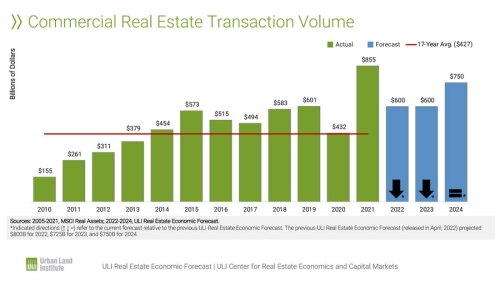A handful of urban centers are climbing out of recession and may serve as models for the rest of the country, according to the real estate report from PWC and the Urban Land Institute presented at a ULI 2011 Fall Meeting press conference in Los Angeles last week. Emerging Trends—touted as one of the “most predictive” of surveys based on past analyses—pinpoints ten cities for 2012 that have the right chemistry for growth. They are as follows: Washington, D.C.; Austin; San Francisco; New York; Boston; Seattle; San Jose; Houston; Los Angeles; and San Diego.
Emerging Trends is kind of the Zagat guide for the real estate set: Just as that restaurant survey polls foodies on their tastes in restaurants, Emerging Trends crowd-sources a wide range of industry experts, including investors, fund managers, developers, property companies, lenders, brokers, advisers, and consultants.
And what do they say unites these ten oases of relative recovery? They are “blue-chip gateways,” according to report author Jonathan D. Miller.
“These relatively safe harbors all have issues,” he said. “But over time, assets in 24-hour markets dependably outperform because they lie along important global commercial routes and attract money from all over the globe.”
Many of them have a strong energy or tech component to their economy (San Jose, San Francisco, Houston); others are buffered by their public sector, particularly if they are capital cities (D.C., Austin); and most of them are poised to capitalize on the institutional apartment market, one of the few surging sectors in real estate today.
“These are places where wealth and business meet,” said ULI senior fellow Steven Blank at the Fall Meeting.
Other, perhaps less expected factors also support these cities’ survivor-island status. Many of them benefit from the “energetic brain power and top professional talent of college campuses” (Austin again, with the University of Texas). Emerging Trends even cross-referenced these cities’ walk scores and concluded that “pedestrian-friendly cities ranked as one of the highest correlations.”
Washington, D.C., remained the number-one city for the third consecutive year, although interviewees wondered whether that market has become too “frothy” in light of talk of federal budget cuts. Austin came in second, and San Francisco—a round-the-clock city with lots of high-paying tech jobs—leapfrogged New York City to number three.
Boston had its fans among those surveyed for its “exceptionally well-educated workforce drawn from local colleges and universities.” They also noted that Beantown’s apartment market is strong, “condo prices will remain surprisingly buoyant, and housing prices will increase again after suffering only modest declines in the downturn.”
The five remaining top markets—Seattle, San Jose, Houston, Los Angeles, and San Diegoeach have their own combination of assets. San Jose, for example, draws synergy from nearby, competing tech titan San Francisco, while L.A. “will come back” because it ranks as “the nation’s number-two apartment and industrial investment market.”
The ULI presenters didn’t dwell much on the bottom-tier cities. (“Whatever happened to real estate in Las Vegas can stay in Vegas,” quipped one.) But they did repeat the litany of obstacles to the recovery of the economy as a whole: global job losses (including the cost of productivity), personal and government debt, aging demographics leading to rising health care costs, a general construction slowdown, a “recalibration” in the financial industries, dysfunctional government, and, of course, the global financial morass.
The report also assesses how different property classes are faring during what it characterized as “the long grind” of a slow recovery. Besides apartments, the interviewees prefer downtown office buildings in 24-hour cities; warehouse properties in gateway cities; full-service hotels in major markets and limited-service hotels; and neighborhood shopping centers in stable infill communities. In the not-so-hot column are power centers and fortress malls. Scoring the lowest are suburban offices, and commodity buildings in campus settings isolated from urban amenities.
This last group gets low walk scores, too.



